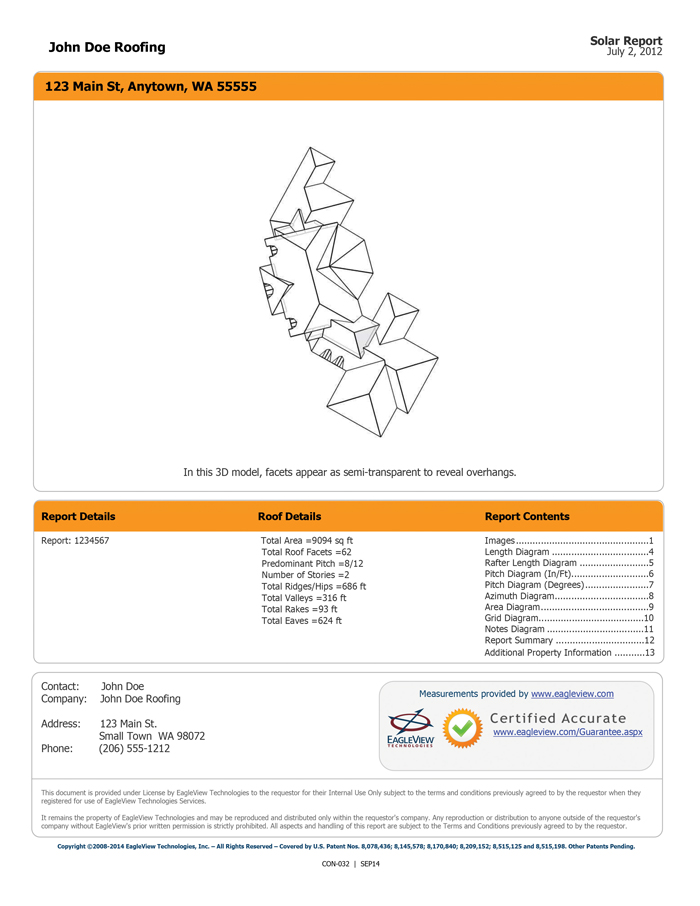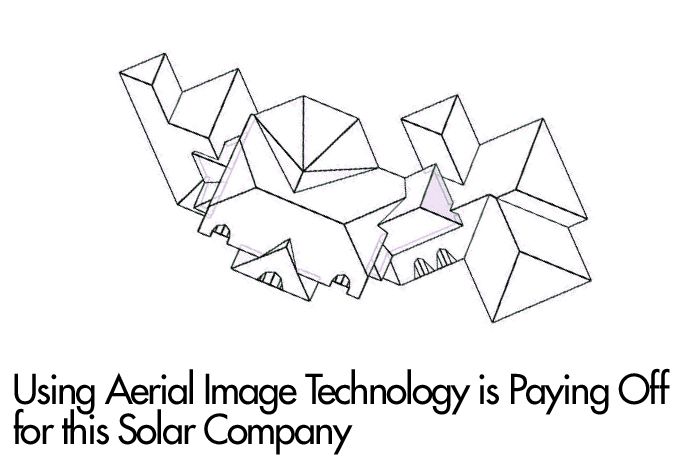Giannoumis has found that using PictometryOnline™, with access to high-resolution aerial imagery and analytical tools, combined with solar roof reports and CAD-compatible .dxf files provided by EagleView Technologies, is the key to maintaining productivity. This technology is also offering the company a new level of profitability and accuracy throughout the system design process.
As the sole residential engineer of solar PV projects for Maryland-based Standard Energy Solutions, Chris Giannoumis is a huge proponent of using technology to automate traditionally manual tasks. Working out of Rockville, MD, he is responsible for all preliminary sales drawings, system design, engineering and CAD permit drawings. One of his greatest challenges is to maximize efficiencies in order to successfully meet the demand of growing solar sales.

Giannoumis has found that using PictometryOnline™, with access to high-resolution aerial imagery and analytical tools, combined with solar roof reports and CAD-compatible .dxf files provided by EagleView Technologies, is the key to maintaining productivity. This technology is also offering the company a new level of profitability and accuracy throughout the system design process.
Using technology from the initial inquiry
The use of these technologies at Standard Energy Solutions starts at the very beginning of the sales process with the inside sales team. “When we get an incoming phone call or an inquiry from our website, our inside team uses PictometryOnline to identify and qualify the property and determine its suitability for a solar PV installation,” explained Giannoumis.
With a service area that extends beyond Virginia, Maryland, Washington, D.C. and Pennsylvania it is a necessity to be able to evaluate properties remotely. “Our sales team is actually able to give a preliminary quote based on what they can evaluate in POL – things like roof size, orientation and obstructions,” he explained.
PictometryOnline is a web-based solution that enables users to access Pictometry imagery and tools via the Internet. A robust suite of analytical tools allows users to gather measurement data such as distance, height, area, elevation, bearing and slope.
Giannoumis is able to export an image of the property for use in the one-page preliminary presentation to the homeowner. “We superimpose the solar panels on the image so the homeowner will have an idea of what the finished project will look like.”
Once the sale is close to the closing point, Giannoumis turns to the EagleView solar roof report for accurate measurements and data. The SolarReport™ provides precise, detailed measurements of the entire roof, including azimuth and orientation as well as the .dxf file of the roof to import into a CAD system.
Putting the report information to work
“I am so grateful that you offer this service,” said Giannoumis. “It’s like I have a team of drafters working with me. I am tasked with a lot of the critical processes and am the last set of eyes before it goes to the permit office or to get the PE stamp. Errors can result in costly revisions and inhibit productivity.”
Giannoumis uses the .dxf file in all of his drawing phases which allows him to extract all the necessary views and information to complete engineered drawings for PE stamping and AHJ approval. The accuracy is key for him, allowing for the verification of information provided after the site visit. “It allows me to verify and double check the site visit results to ensure there were no issues with the tools. If there were magnetic interference with the compass it’s possible it could be off, which could affect our system output estimates.”
The technology is not always going to take the place of a site visit but according to Giannoumis there are times when they sometimes don’t have to make a visit to the property at all. “Nine times out of 10 we will be going to the house, but having this information ahead of time means the guys don’t necessarily have to get on the roof, which can be a huge safety issue for us. They are able to do their job from the ground level, taking some basic measurements and verifying the tilt and azimuth.”

Having the EagleView measurements also eliminates the challenges presented by the transmission of information. “Sometimes our field guys would come back with handwritten notes that are very difficult to decipher.” In those cases, he would have to either guess or try to contact the field team which delays the progress of the project.
Giannoumis also likes that fact that by using EagleView, he is able to capture measurements for every structure on the property, which can eliminate the need for multiple site visits. When his company sends a team to a home, they hope it’s a one-time visit because it involves a truck roll, two field staff plus the time involved.
Having measurements for every structure avoids situations where the internal sales and engineering team may not have communicated correctly resulting in the field team not capturing all the measurements needed. He recalled one time when only two of the three roofs on the property were measured by the field team but the third one could have been measured because it was a viable candidate for producing energy. With the EagleView Report, this scenario won’t happen.
The importance of accuracy
Standard Energy Solutions works regularly with organizations that have very strict guidelines for its solar projects and if the documentation is not correct, the process cannot proceed without corrective action. Giannoumis says by using the EagleView Reports, they get all the details they need and don’t have to worry about multiple site visits to gather additional data.
Shortly after Giannoumis began using EagleView Solar Reports, he did some auditing to make sure the EagleView numbers were accurate enough to meet their needs. He started by checking the accuracy of the length measurements provided on a particular house and found that EagleView’s measurement was 76.6 and his field verification was 77. “That’s pretty darn close for me, considering our field team is typically rounding,” he explained. The next two properties he checked were within inches of each other.
Because slope of the roof is so important in solar PV applications he decided to double check those measurements too. “Our guys came up with a slope of 26 and EagleView was at 27. They are so close that I have no confidence issues with the measurements I receive from the reports.”
Giannoumis says that the solar roof report technology is well worth the investment. “I only pay for it when I need it, which is much cheaper than having a full time drafter in place. It allows me to focus my attention on the things that I do best – engineering and designing an effective solar PV system.”
The content & opinions in this article are the author’s and do not necessarily represent the views of AltEnergyMag
Comments (0)
This post does not have any comments. Be the first to leave a comment below.
Featured Product


